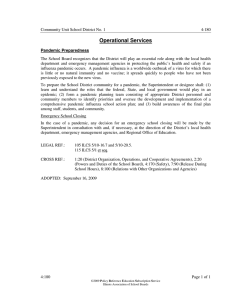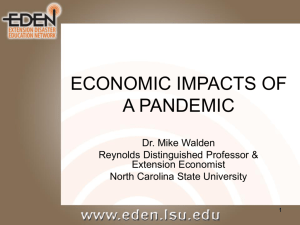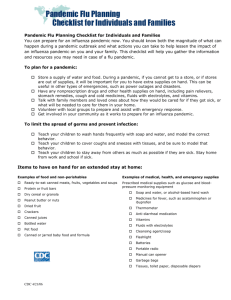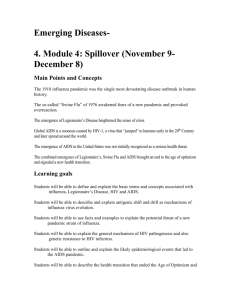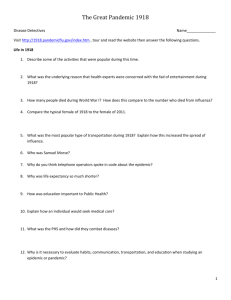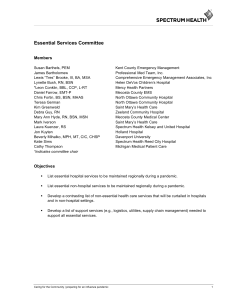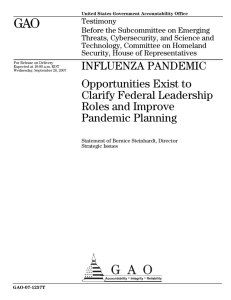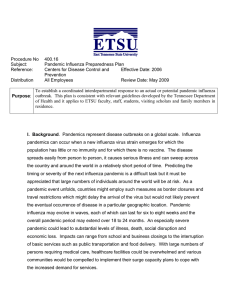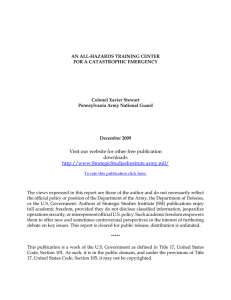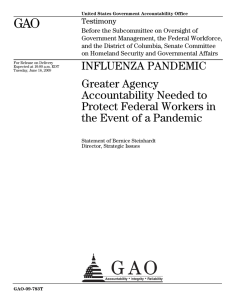Predicting the impact
advertisement
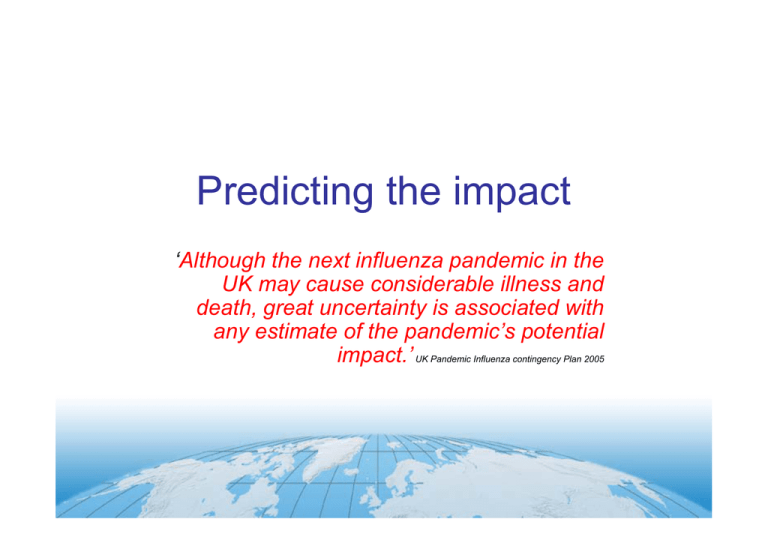
Predicting the impact ‘Although the next influenza pandemic in the UK may cause considerable illness and death, great uncertainty is associated with any estimate of the pandemic’s potential impact.’ UK Pandemic Influenza contingency Plan 2005 Expected scale and severity Global High-income countries UK Expected deaths Expected hospitalisations 2-50 million 6.4-28.1 million 280,000 650,000 1.5-5.2 million Minimum of 50,000 Minimum of 80,000 Pandemic flu effect on the UK Impossible to predict when it will begin Difficult to predict impact with any accuracy Estimates of scale of illness, death rates and those most likely to have severe illness are uncertain Will also depend on the availability and effectiveness of antiviral drugs and vaccines Impact on health services Likely to place great pressure on health and social services – Increased numbers of patients requiring treatment – Depletion of the workforce due to illness and other disruption Impact on business 25% of the UK workforce will take 5-8 working days off over a three-month period Estimates suggest that during the peak absenteeism will double in the private sector and increase by two-thirds in the public sector Impact on schools and services Likely to spread rapidly in schools and other closed communities Impact on all services including police, fire, the military, fuel supply, food production, distribution and transport, prisons, education and business Pandemic waves (1) Past experience teaches us that following the emergence of a new pandemic virus: more than one wave of influenza is likely the gaps between the waves may be weeks or months a subsequent wave could be worse than the first Pandemic waves (2) The 1918/19 A/H1N1 pandemic occurred in three distinct waves: early spring 1918, autumn 1918 and winter 1919 The second wave was the largest and had the highest case fatality Pandemic waves (3) In 1957/58 the second wave was very small in comparison to the first In contrast, the 1968/69 A/H3N2 pandemic, the second wave in 1969/70 was more severe than the epidemic wave in the winter of 1968/69 Year 2003/04 2002/03 2001/02 2000/01 1999/00 1998/99 1997/98 1996/97 1995/96 1994/95 1993/94 1992/93 1991/92 700 1990/91 1989/90 1988/89 1987/88 1986/87 1985/86 1984/85 1983/84 1982/83 1981/82 1980/81 1979/80 1978/79 1977/78 1976/77 900 1975/76 1974/75 1973/74 800 1972/73 1971/72 1970/71 1969/70 1968/69 1967/68 1966/67 Rate per 100 000 population Seasonal and pandemic influenza: Weekly GP consultations for influenza-like illness RCGP Index for Influenza & Influenza-like Illness, 1966 and 2003 (Year marked at start of season i.e. Week 40 (October)) 1300 1969/70 1200 1100 1000 1975/76 1972/73 1967/68 1989/90 600 500 400 300 200 100 0
